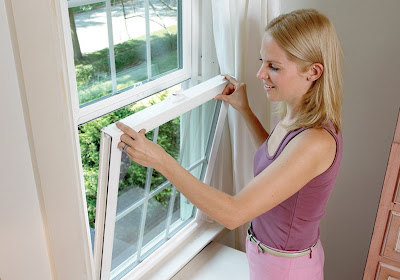Windows add aesthetic appeal to our homes, allowing natural light and ventilation to brighten our spaces. However, old windows may sometimes exhibit an annoying tendency to slide down due to various factors such as loose screws, worn-out weatherstripping, or faulty springs. This article will guide you through a comprehensive set of solutions to address this issue, effectively keeping your old windows in place and allowing for smooth operation.
:max_bytes(150000):strip_icc()/help-windows-slide-easier-1822953-08-3bfd417482c741ef94e6c498503c6260.jpg)
Image: www.thespruce.com
Understanding the Causes of Sliding Windows
Before delving into the solutions, it’s essential to understand the root causes of sliding windows. Identifying the source of the problem will enable you to choose the most appropriate remedy.
Loose Screws
Loose screws are a common cause of sliding windows. Over time, the screws that hold the window frame and sash together can loosen due to repeated use, vibration, or exposure to the elements. Loose screws allow the sash to shift within the frame, resulting in a downward movement.
Worn-Out Weatherstripping
Weatherstripping plays a crucial role in preventing air or water infiltration around the window. As windows age, the weatherstripping can become brittle, cracked, or compressed, losing its ability to effectively seal the gap between the sash and frame. This allows air to pass through, creating a pressure imbalance that may cause the window to slide down.

Image: homeinteriorfurnituredesignideas.blogspot.com
Faulty Springs
Some windows are equipped with springs to counterbalance the weight of the sash and keep it in position. These springs can weaken over time or become damaged, leading to a decrease in tension. As a result, the window may no longer stay fully open or closed, and it may slide down due to its own weight.
Comprehensive Solutions for Sliding Windows
After determining the underlying cause, you can implement one of the following solutions to resolve the issue:
Tightening Loose Screws
Tightening loose screws is a straightforward solution that requires only a screwdriver. Inspect the window frame and sash for loose screws, and use a screwdriver to tighten them securely. Ensure the screws are seated fully and evenly to prevent future loosening.
Replacing Worn-Out Weatherstripping
Replacing worn-out weatherstripping requires a bit more effort but is still achievable with some basic tools and materials. Remove the old weatherstripping and clean the surface where it fits. Measure and cut the new weatherstripping to the appropriate length, and peel off the backing to expose the adhesive. Carefully press the weatherstripping into place and ensure its secure adherence to both the sash and frame.
Adjusting or Replacing Springs
Adjusting or replacing springs is a relatively more complex solution and may require professional assistance. Firstly, you need to locate and access the springs within the window frame or jamb. Consult the manufacturer’s instructions to determine the proper method of adjustment or replacement. If the springs are damaged or beyond repair, it’s recommended to seek help from a qualified window technician.
Additional Tips for Prevention
In addition to implementing the solutions mentioned above, you can follow these tips to prevent old windows from sliding down:
- Regularly inspect your windows for loose screws or worn-out weatherstripping.
- Lubricate the window’s moving parts, such as hinges and rollers, to ensure smooth operation.
- Avoid slamming the windows shut or opening them too wide, as it can put added strain on the springs and screws.
FAQ on Sliding Windows
Here are some frequently asked questions about sliding windows:
Q: Why do old windows slide down?
A: Loose screws, worn-out weatherstripping, or faulty springs can all contribute to old windows sliding down.
Q: Can I fix sliding windows myself?
A: While tightening loose screws or replacing weatherstripping can be done by yourself, adjusting or replacing springs may require professional assistance.
Q: How can I prevent old windows from sliding down?
A: Regular inspections, lubrication, and avoiding slamming or extreme opening of windows can help prevent sliding.
How To Keep Old Windows From Sliding Down
Conclusion
By understanding the causes and implementing the solutions discussed in this article, you can effectively resolve the problem of old windows sliding down and ensure their proper function. Remember, taking proactive measures and adhering to the tips provided will not only enhance the performance of your windows but also contribute to a more comfortable and aesthetically pleasing living space. Whether you’re a DIY enthusiast or prefer professional assistance, there’s a solution for every sliding window issue, allowing you to enjoy a hassle-free window operation for years to come.